1/48 Hasegawa F6F-3 Hellcat, The Great Mariana’s “Turkey Shoot” Lt. Arthur “Payne” Whiteway, VF-16 “Fighting Airedales” USS Lexington
Today and tomorrow marks the 73rd Anniversary of the Mariana's "Turkey Shoot", which happened on June 19th and 20th, 1944. It is sometimes called the battle of the Philippine Sea, where the Japanese lost an estimated 550 - 645 aircraft, 3 more "Fleet" Aircraft Carriers and nearly 3,000 men .
To quote "Wikipedia" directly, this is how the event got it's name...
During a debriefing after the first two air battles a pilot from USS Lexington remarked "Why, hell, it was just like an old-time turkey shoot down home!", referring to how the Japanese planes were shot from the sky.
About 8 years ago or so, when I was still working as a Fire Fighter for a local municipality, I just happened to run into a former pilot who was there during this "Turkey Shoot". It's often funny how in life you can cross paths with people...
His name was Arthur "Payne" Whiteway, and here's a photo of him sitting in the cockpit of an F6F Hellcat while he was flying with VF-16 from the USS Lexington.
On this particular night, we had responded to a fire alarm sounding at a 4 story tall apartment complex, that was at this time mainly inhabited by elderly persons. This can be a dangerous situation, with the possibility of large loss of life due to the fact that the elderly are sometimes bed ridden or have problems moving around. As a Company Officer I was the highest ranking person on scene during the first 15 minutes or so.
Having responded to numerous calls like this over the years of my career, I was thinking about what could go wrong and what to mentally prepare for "just in case". I never let my guard down on any call that I responded to during my firefighting career, because you just never know...
When our Fire Engine arrived first on scene, I reported a slight amount of smoke coming from one of the first floor exit doors. There were a lot of people that had already evacuated the building. The alarm systems visible warning strobe lights were flashing, and the alarm system was audibly sounding. I established command, and set aside a place for our ladder truck to come and set up its ladder which would raise to 75 feet to get ready for possible ladder rescues. I also had a place set aside for the rescue truck company and numerous EVAC ambulances. Meanwhile I picked a person to start gathering all of the occupants that had exited the building and have them report to a safer location nearby.
Needless to say, I was a very busy man with a lot on my mind at the time...
Then I met "Payne" as his friends called him.
He was walking near the entrance door, and wearing a US Navy baseball style cap that had the words "USS Lexington VF-16, Hellcat Pilot" embroidered on it. I looked at him and gave him a thumbs up, followed by a smart military style hand salute and told him "Thank you Sir for your service. I'm a big time WW2 aviation history buff". Payne smiled really big, returned my salute and told me that he would like to talk with me once this scene was wrapped up...
After we found the cause of the "smoke", which was actually powder from a dry chemical fire extinguisher, (someone had been playing in the hallway and discharged several in the hallway which set off the alarm), I said a prayer to myself thanking God that it was indeed not a fire. The dust from the dry chemical extinguishers looked like a light colored smoke at night...there was that much of it.
We ventilated the dust as best we could, marked off the affected hallway and turned the scene over to the local Police, since it's a crime in Florida to discharge an extinguisher like this.
After we started allowing residents back into the apartments, Payne found me and we had a short conversation. I pointed at his hat and grinned, then pointed at the name of the Apartments, which ironically was called "Lexington Place". Payne grinned back and said, "Yeah I know, I just can't seem to get away from anything named Lexington.", while pointing at his hat.
I asked him when did he serve on board the "Lex", and he told me that he flew from the Lexington from around mid 1943 to shortly after June of 1944 while serving with VF-16 the "Fighting Airedales", but added that he remained in the Navy until the War ended. Payne then told me that he would be moving out of the apartments at the end of the month, since his children were worried about him. I told him that if I could I would love to meet with him again and we could talk about airplanes when I had more time. He said that would be fine. I asked Payne if he flew with Alex Vraciu and he said yes, many times and that he knew him very well.
About that time we got another emergency call and had to leave...
He had a love for the Hellcat. You could tell it by the way he talked about the plane. Payne was the kind of person that you felt like you knew for years, even after just meeting him for the first time. He was a very kind man.
Sadly I never made it back to visit him again. Things always got in the way or something would happen that didn't allow me to do it. About two years ago I tried to look him up and visit him after I retired from the Fire Department.
Unfortunately he had passed away about a year earlier...so I never got to have that talk with my friend.
Every since then I have always wanted to build a model to represent one of the F6F-3 Hellcats that he may have flown. In his obituary, they stated that Payne flew a Hellcat numbered "13", so I started my research on VF-16.
and promptly found this photo...
which shows a VF-16 Hellcat number 13 that had crash landed on the Lexington. The caption stated that ENS Ed "Wendy" Windorf was the pilot at the time of this crash, and that he had been wounded. This was his first combat flight and the crash occurred on December 4th, 1943. This was during the time when Payne was onboard the "Lex".
This is a picture of "Wendy" Windorf sporting a bandage above his left eye, a day or so after the crash landing. He scored two kills and was wounded on his first mission. He crash landed old number 13 because blood from his head injury (caused by a Japanese bullet), was flowing into his left eye. He later said that a "carrier landing is hard enough when you have two good eyes, and is much more difficult when you only have one !".
Then I pulled out my book on the Hellcat by Steve Ginter, which is an excellent source of information...
and also used my "Blue Devils" book by Barret Tillman where I found some more neat information about VF-16. This is another "must have" book...
I was really stoked now, and started scrounging the internet for more VF-16 photos.
That's when I found this really cool color picture showing Lt. Commander Paul Buie (who was the VF-16 CO) along with some pilots from VF-16. This picture was taken just after the November 23rd raid ...
The pilots and caption from the photo are listed as follows from left to right in this photo below:
"Pilots pleased over their victory during the Marshall Islands attack aboard USS Lexington (CV-16), after shooting down 17 out of 20 Japanese planes heading for Tarawa. November 1943. Photographed by CDR Edward Steichen, USNR.
They are (l-r): ENS WM. J. Seyfferle, LT(JG) A. R. Fizalkowski, LT(JG) A. L. Frendberg, LCDR Paul D. Buie (Commanding Officer), ENS John W. Bartol, LT(JG) Dean D. Whitmore, LT(JG) Francis M. Fleming, LT(JG) WM. C. B. Birkholm, LT(JG) Sven Rolfsen, Jr. plus two others not named in group to right of LCDR Buie. Planes are F6F-3 Hellcats."
This is an AMAZING photo shown below, where it records my friend Payne after he scored his FIRST kill, which was reported as an A6M Zero... All of these VF-16 pilots scored on this day: November 23rd, 1943. A total of 17 confirmed kills were made by these VF-16 pilots on this day. Some of the pilots in this black and white photo are also in the color picture shown above.
Commander Buie is the tallest man in the picture, 3rd from the left, and Payne is the 5th man from the left, almost in the middle of this picture. These are pilots who scored kills on November 23rd.
Here's the caption from the photo:
"The day's tally for fighter pilots on Nov, 23 1943. Left to right: Ens. Ruckiske, Lt. (jg) Fleming, Lt. Com. Buie, Lt. (jg) Frendling, Lt. (jg) Whiteway, Lt (jg) Birkholm, Lt. (jg) Rogers, Lt. Kosciuski."
These pilots are all holding fingers up representing the number of planes they bagged that day in this photo below.
Now I was really in the search mode and just couldn't find enough stuff about VF-16. That's when I ran across these pictures:
A cool color photo shown below of the Lexington, CV-16
a color photo showing a F6F Hellcat landing on board the Lex...
Ground crew trying to clear a fouled deck with a disabled VF-16 F6F...
and a newspaper article about the time period...
along with the original picture from the archives:
I found out that VF-16 tried to assign pilots a particular plane, but that it wasn't always available for the assigned pilot to fly. So it was not uncommon for the pilots to be flying someone else's plane as required.
Then I found what could possibly be the "Holy Grail" of photos. It shows and F6F landing with the engine smoking in this picture below... and it's plane number #13... If you look closely at this one, you will see that the fuselage side number #13 is much larger as if it was repainted in a smaller size at a later date, (or the plane may have simply been replaced).
It came from the Ginter book on Hellcats, and it had another cool picture showing some VF-16 pilots walking out to their planes...(which Barrett Tillman used as the book cover / jacket for his book "Blue Devils").
This is the lower photo in this picture below.
Here's the caption for the picture:
So who really knows ? My friend "Payne" could have flown or been in some of these photos. I can guarantee that he would have recognized some of the faces in these pictures.
In February of 1944, a few months before the "Turkey Shoot" Alex Vraciu was assigned to VF-16. I also found this neat color photo showing planes on the deck of the Lexington, as seen below... This picture was taken in April 1944.
Here's a picture of Alex Vraciu just as he exited his plane on board the Lexington, on June 19th, 1944. He is smiling and holding up six fingers... He has just scored 6 aerial victories when he shot down 6 Yokosuka D4Y "Judy's". Vraciu downed these six planes in a matter of 8 minutes, and only used 360 rounds of .050 caliber ammunition... He was later awarded the Navy Cross for this action. This plane was suffering from a malfunctioning supercharger. It wouldn't go into "High Blower" settings, and failed to have the altitude and speed performance that it normally would have.
The very next day Vraciu downed an A6M Zero and became the US Navy's leading Ace. He held this distinction for the next several months.
If you look close, the plane he is standing next to has only a few kill markings just below the side of the cockpit on the Starboard side. Is this plane number 13 ? I really don't know for sure... but I do know that it is from the Group that Payne flew with that day.
Then I found out that Payne had to land on the USS Cabot on the night of June 20th, 1944 (The Mission after darkness) after his Hellcat was almost out of fuel. Admiral Mitscher, Commander of TF-58, had sent out another aerial attack, whose objective was to find and destroy the remaining Japanese Carriers, even though they would be flying at the end of their range, and darkness was falling...
The USS Lexington was the Task Force 58 flagship.
Payne was about to ditch his plane, when he noticed the spot lights were turned on a ship. So he flew toward the lights... then noticed another light , and another... He followed the lights until he came across the US Aircraft Carrier USS Cabot CVL-28.
He landed there on the Cabot with a few gallons of fuel left...after he had scored another Zero kill.
Armed with this newly found information, I began my build as a tribute to my friend.
Here's a link to his obituary where they refer to him shooting down another A6M Zero during the Mariana's "Turkey Shoot" and how his F6F was number #13.
http://www.tributes.com/obituary/show/Arthur-Payne-Whiteway-100673271
Please follow the link. There's a lot more information there about his life and family. I wish I would have had the opportunity to speak with him as originally planned, looked at some photos and possibly even his log book. I'm sorry that I missed out on this opportunity. A word of wisdom. These men are like National Treasures. They are not going to be around for much longer. So if you have a friend, or know someone who is a veteran and can spend some time with them, please do so. You both will be much happier afterwards.
So with that, here's my version of "Payne's F6F Hellcat", sporting two kill markings.
I hope you enjoy it.
The model itself is a Hasegawa 1/48 kit, and was a joy to build. It went together without any problems. The paints used were Model Master enamels.
I had a build log of the model here on Imodeler. Here's the link for the build thread:
http://imodeler.com/groups/work-in-progress-aircraft/forum/topic/148-hasegawa-f6f-3-hellcat-vf-16/
As usual, comments are encouraged.
Take care.

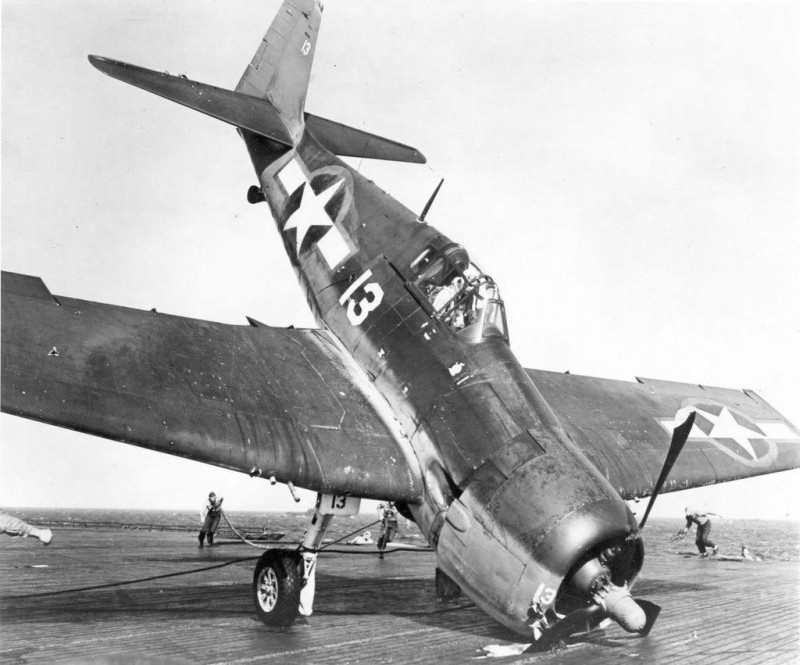
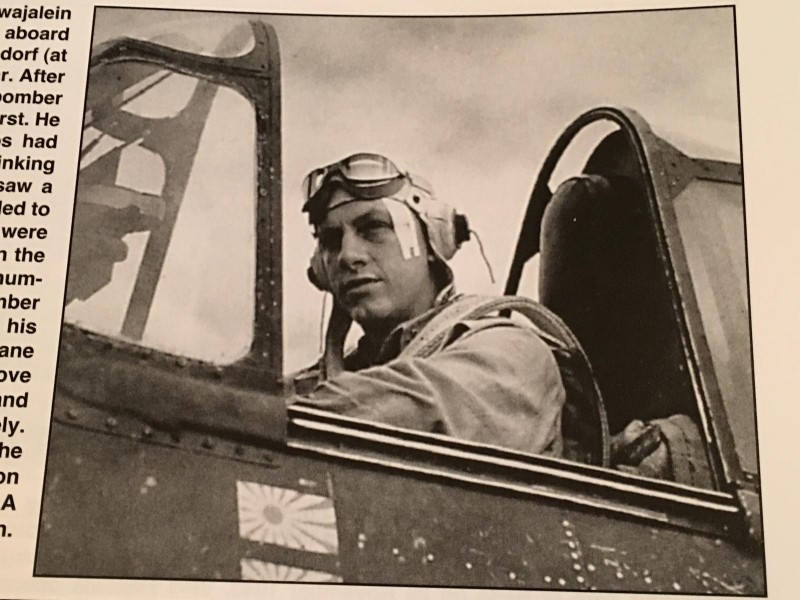

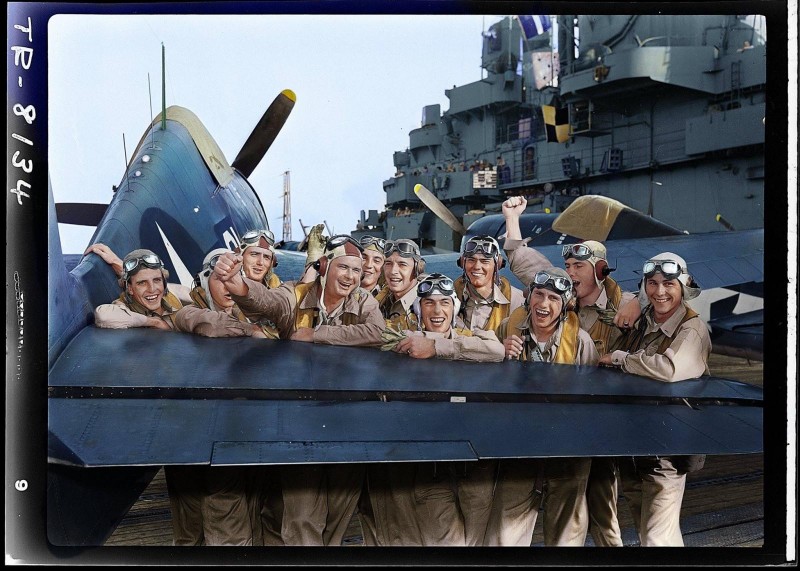
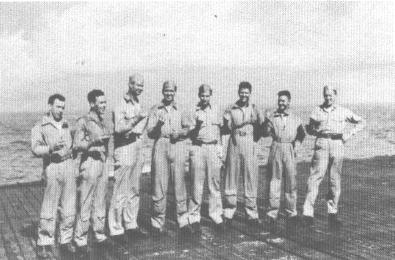
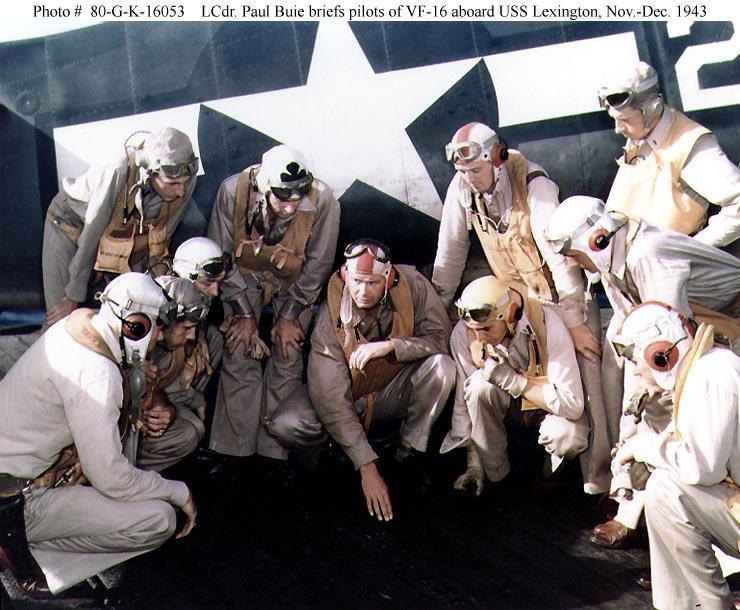
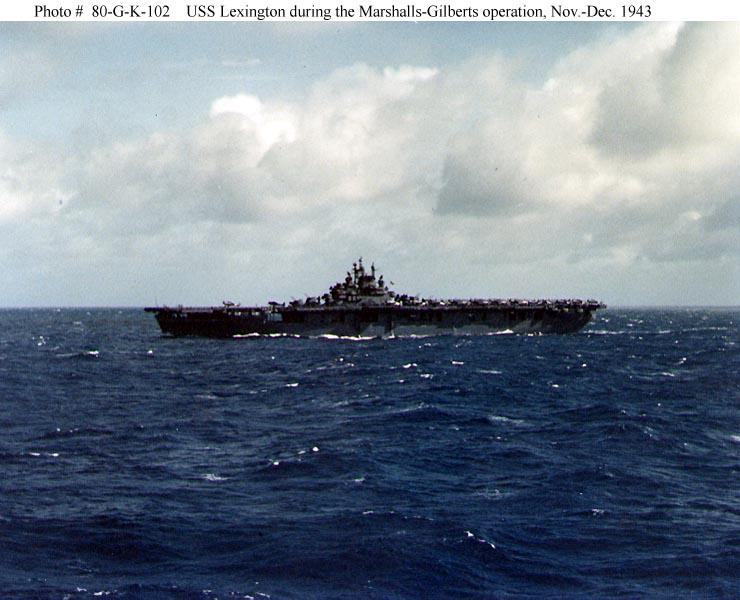
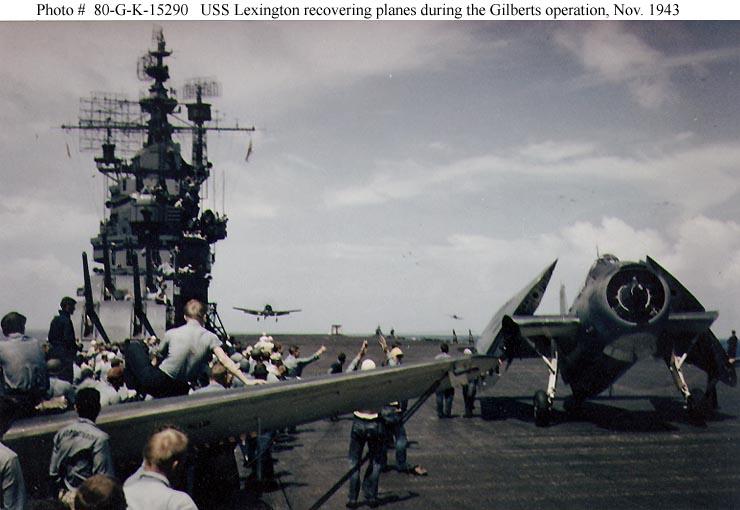
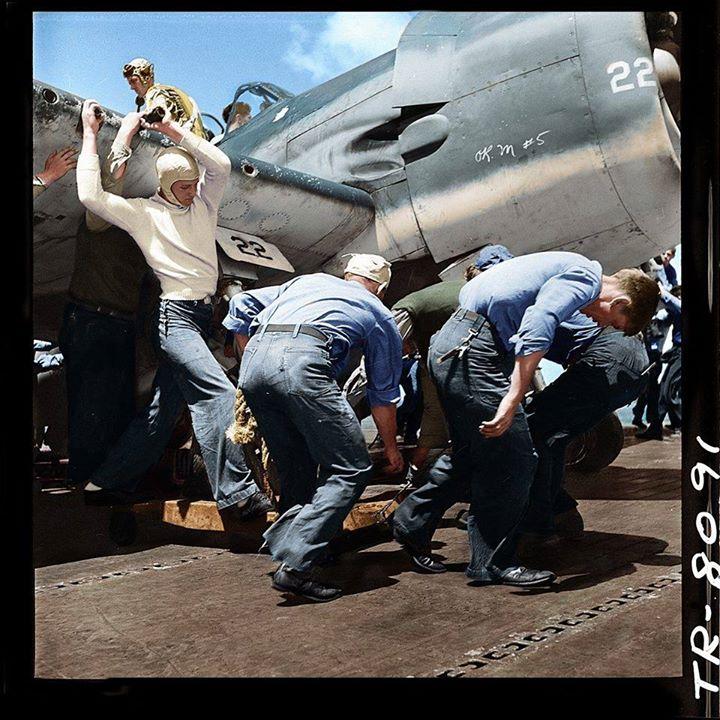
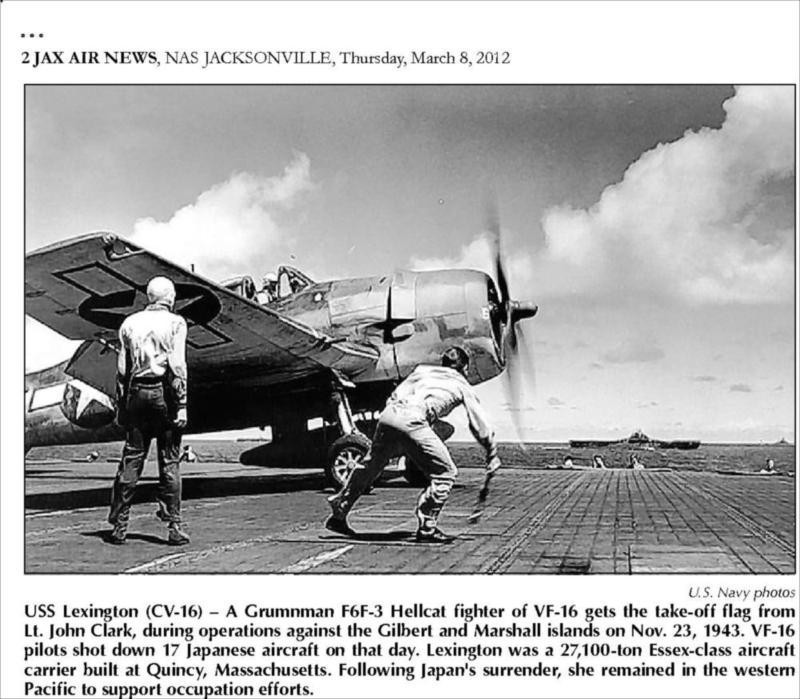
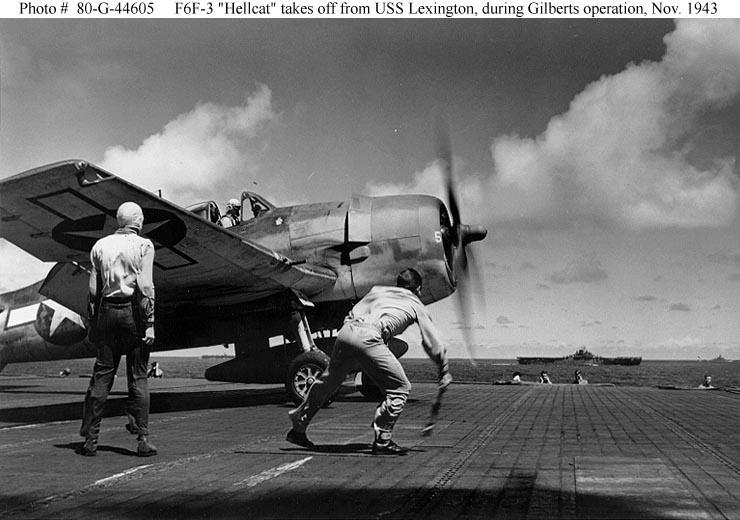
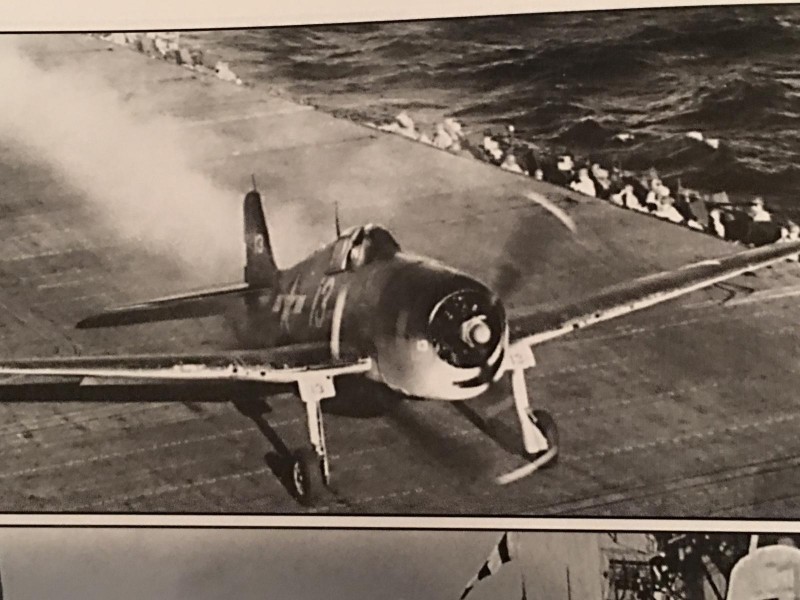
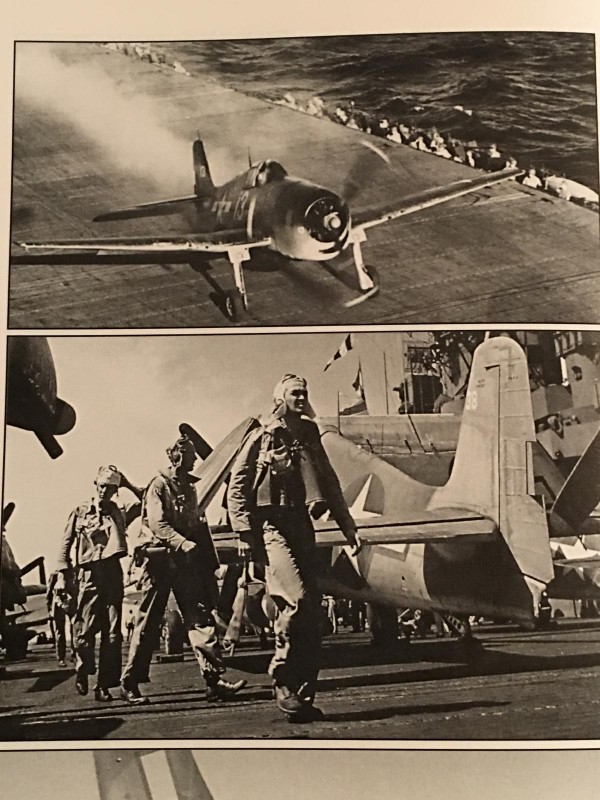
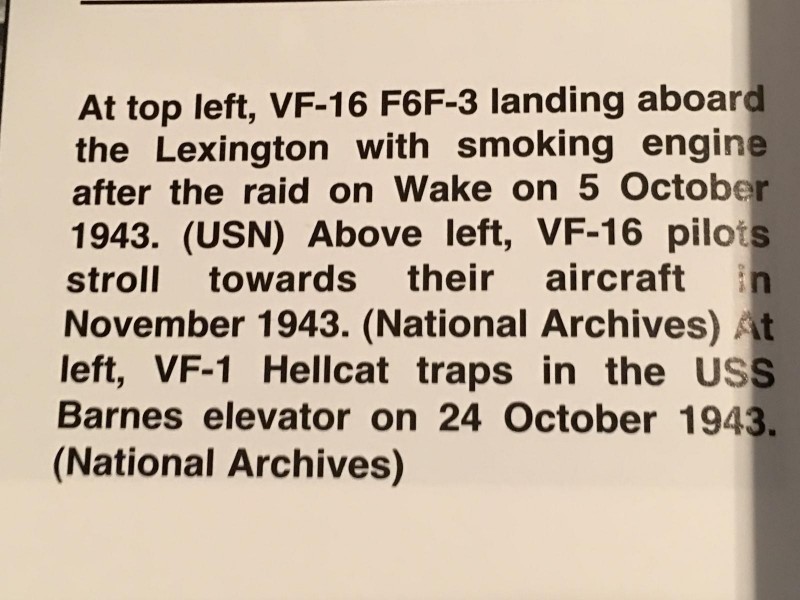
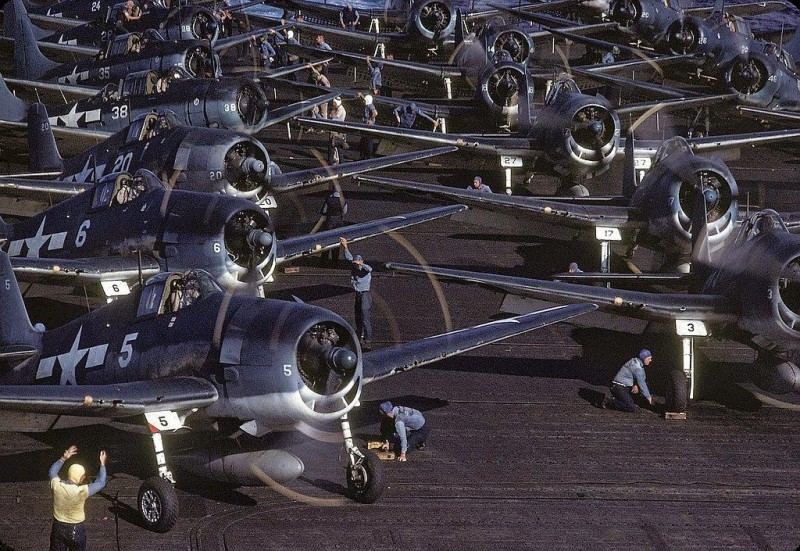
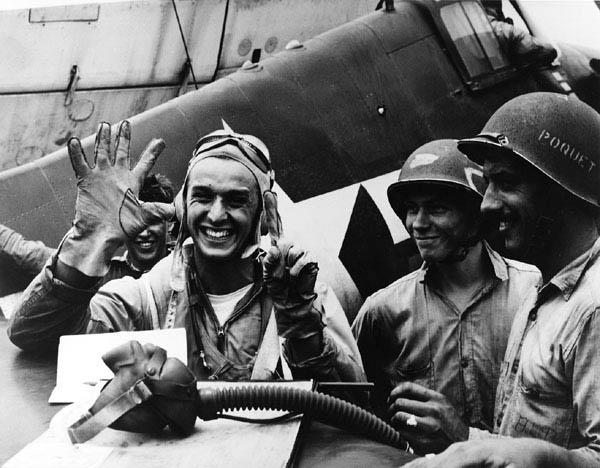
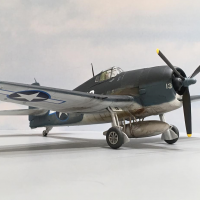
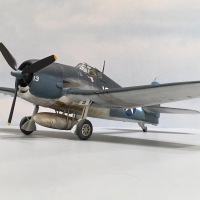
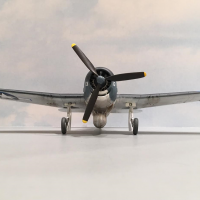
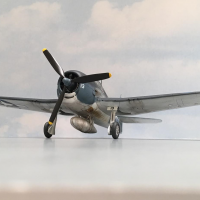
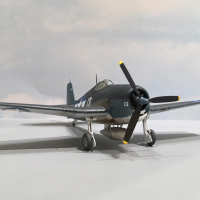
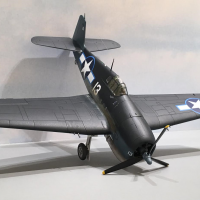
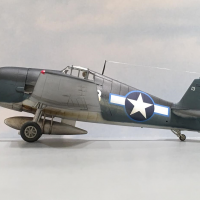
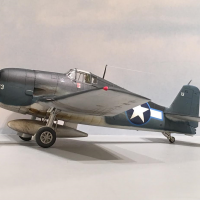
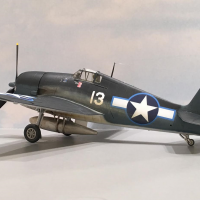
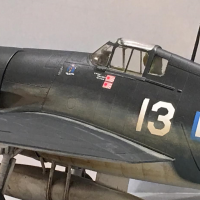
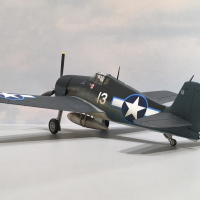


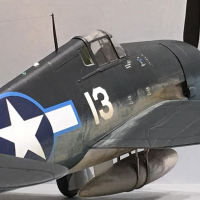
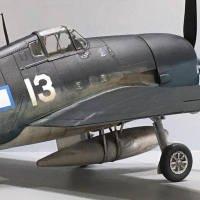
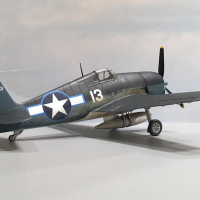
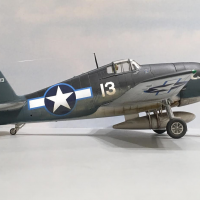
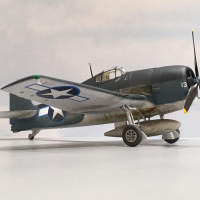
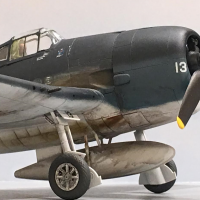
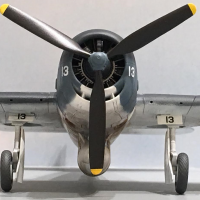
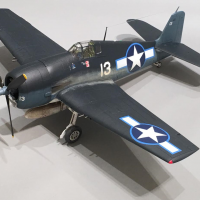
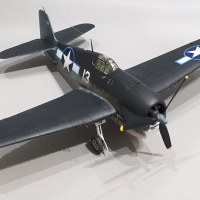
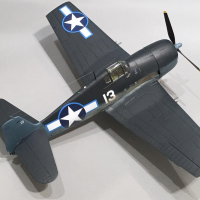
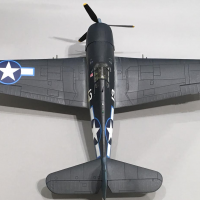
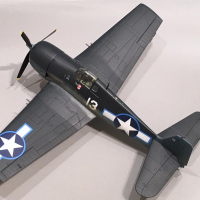
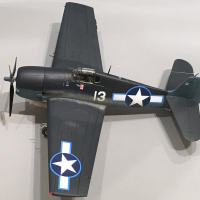
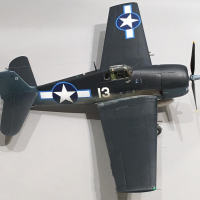
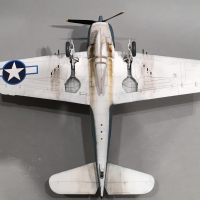
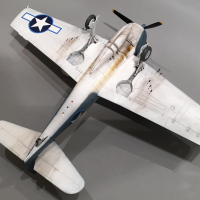
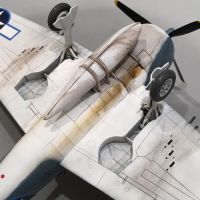
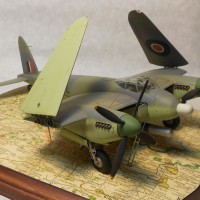
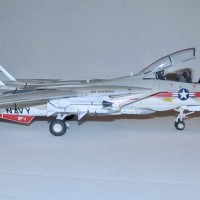
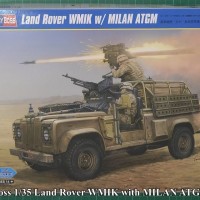
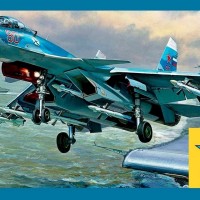
Wonderful story, Louis...thank you. And an equally nice build (of course). Thanks so much for taking the time to share this with the rest of us.
Thank you Craig. I'm glad you liked it.
Good stuff Louis, by the way that's a nice looking model, and the key to any good Hellcat model is to get that exhaust stain right, and it looks like you did. Thanks for sharing.
Thanks Terry. You're 100 percent correct about the exhaust stains on the F6F. They can make or break the build. It's a little tricky to get it right, especially since the lead used in the US grade "high octane" AV gas left a gray / light tan color on the surfaces of the planes. I also added some oil leaks on and around the cowling areas that are common with all radial engines. Thanks again Terry !
Absolutely right Louis - Tetraethyl lead - an anti knock agent added to fuel allowed substantially higher compression ratios - and supercharger / turbocharger settings - more power - it left that grey/white exhaust residue on allied aircraft.
An often overlooked but crucial US contribution for the allies.
Excellent build Louis and tribute to not only Lt Whiteway but the rest of the Naval Aviators who took part. I have the same exact kit done a few years ago as #13 markings from an Aeromaster sheet, and different in that stars and bars are in the dark blue. And maybe flown by Lt Alex Vraciu, but the history is not confirmed as stated on the decal sheet. As mentioned personal mounts were not established and pilots flew whatever was available. But I love it, and makes it much more special. Fly Navy.
I appreciate the compliments Chuck.
Yes there are some sources that have Vraciu listed as scoring his 6 "Judy" kills in this plane during the "Turkey Shoot", and it very well could be possible that he did. The F6F he was flying that day had a malfunctioning supercharger.
On the very next day he downed number 19, which was a Zero. This Zero kill made Vraciu the highest scoring Navy Ace at the time. He held on to this spot for several months, and was awarded the Navy Cross for his actions when he scored his 6 kills in one mission.
To me, this plane has a lot of historical significance, and is one of my favorites.
Thank you again my friend.
From what I have gathered, the pilots were assigned a plane, and helped do "routine maintenance" on them with the ground crews once a week. But they didn't always get to fly "their" plane on all occasions, just as you stated.
Proof once again the old Otaki kit is still good. Nice work.
As my friend Barrett Tillman says about meeting/talking to vets: "do it NOW." There is one guy left of the five I interviewed for Bridgebusters, having interviewed them only two years ago. Same for Air Group 15.
You'll definitely like "Pacific Thunder," Louis, since VF-16 figures prominently. The November 23, 1943 furball was the first big air battle of F6Fs vs Zekes and the first big score.
Thanks Tom. I just edited the heading to reflect that this is the 1/48 Hasegawa F6F. I failed to mention this originally.
I have learned a valuable lesson with my failure to meet with Payne. I truly am sorry that I never had the chance to talk with him. Barrett Tillman is correct with that statement...
Sounds like I'm going to have to locate a copy of the "Pacific Thunder" too...
Maybe they will have some information about Payne in it, since he scored his first kill on November 23rd. He was part of the group of pilots that scored the 17 victories for VF-16 that date.
Thanks again for the compliments !
Cool story, and excellent Hellcat - love the weathering and finish on it. She's a beauty!
Thanks Greg. I appreciate the kind words buddy.
Great story, nice build, excellent research .
Thanks Bob ! I'm glad you liked this one...
As always, Louis, a pleasure to follow your work and read your words.
"Fly high" indeed.
Thanks my friend. I appreciate the compliments and that you "liked" this article as well. I'll be looking forward to updates with you 'Cats and will be starting the Group Build "Year of the Cat" soon... Take care buddy...
Wonderful work as always coming from you Louis,were do you find the time this is more than just model building,you have excelled as you do thanks for sharing.
Thank you Jim. I have had most of the research stuff for a while now. Since I have recently retired, I now have more time to dedicate to our hobby... Believe me there was a time when I didn't get to build anything for quite a while. So now I'm trying to make up for lost time and try to get a decent amount of my stash built before I kick the bucket and someone else ends up with my stuff at a deeply discounted yard sale... 🙂
Thanks again buddy. I appreciate the compliments.
Thanks for the reply,I read some place that a modeler guy said when he dies he wants all his models melted down and made into a coffin and all his spare decals to decorate it,so who says you can't take them with you.just a thought!
Such a cool, cool story. Love this sort of stuff. Maybe I should write-up one of mine one-day.
Ian.
Thanks Ian. This is something that I have been wanting to do for some time now. I can scratch another item from my "bucket list " 🙂
I say go for it and write your story.
Nice job, Louis. I too am one of those contrarians who prefers the Hasegawa F6F to the Eduard kit. I razz Terry Schuler about this all the time. The cowling looks a little funny but i think its superior to the Eduard kit in almost all other aspects. Plus they can be found for cheap on the secondary market. If you get the time, you owe it to yourself to build one of those Nautilus wooden carrier decks to display your models on when you take em to meetings and/ or the contest circuit. I made one for my F4U-2 and it was probably the best display base i've ever done.
Thanks David. I have been thinking about building a deck like you mentioned especially when I saw how great your F4U-2 looked sitting on one. I just didn't know who made this setup. Thanks for the heads up. I'll try to locate one. Thanks for the compliments too. I really like the older Hasegawa kit too. I have an Eduard and a HB 1/48 F6F that still needs to be built. I have never built those manufacturers F6F's before.
Great build Louis and Wonderful photos - I wonder what the writing on the cowling of No. 22 means. "O.K. M #5"?
I'm not 100 percent sure , but I have an idea. In other photos that show ground crews working in the proximity of the machine gun muzzles, there are similar markings. What I suspected is this. The armorers have cleared the weapons, meaning they removed the ammunition and cleared the chambers of all rounds so that the machine guns could not be accidentally fired. If they were, the ground crews working on or near the plane, or even anywhere down range of the weapons could be seriously injured or even killed. So that's what I think it means. Number 5 wing mounted .050 caliber has been cleared. Just my guess.
Thanks for the compliments on this build my friend.
that sounds pretty accurate to me - super photos all round!
Hello Louis,
Great story with magnificent pictures.
My compliments on your model. Very delicate weathering. Going to take some pics with me to the model club. One of our youngsters is busy with the same model from Hobby Boss. he has to be convinced to do "some"weathering to his models in general.
Regards, Dirk / The Netherlands
Thank you Dirk. I am glad that you liked the article and I sincerely appreciate the compliments. Please feel free to check out a few of my other builds for more weathering ideas. Here's a link for another F6F-3 as flown by Alex Vraciu.
Hope this helps...
Wow...a well-written, thoroughly researched article, along with a beautifully built and finished kit of the subject. That's what modeling is all about. Well done, Louis! And I agree with you - I prefer the Hasegawa F6F kits over Eduard's.
Thanks Drew ! I have yet to build the Eduard or HB version of this plane. I have one of each in the stash. With the "Year of the Cat" GB going on right now, it might be a good time to try them out. But as it stands right now I really like the Hasegawa kit as it's fit is spot on and to me it looks great once finished. Thanks my friend for the kind words. I appreciate this.
Great post, Louis, all of your research really helps to make this a very accurate model.
Thanks George. I try to build my kits with information in hand to make them realistic. I'm glad you liked the post ! Take care my friend.
A great tribute and build Louis
Thanks George.
Hi Louis,
My name is Alexa, and I am Arthur Whiteway’s granddaughter! I came across your article while looking up some info on his amazing Hellcat and his history with it. This is such a wonderful bit of history, both his as well as the F6F. He was a wonderfully loving, generous, and hilarious man who we miss every day. It’s really amazing to find stories like this from people who got to hear his story and experience his shining charisma and storytelling.
Thank you so much for writing this, and remembering him as fondly as his family and friends.
Best,
Alexa Whiteway
Thank you so much for posting !
I'm very pleased that this story has made it back to his surviving family... I only met your grandfather once, but he left a great impression on me. I'm truly sorry for your loss, and that I never got to meet with him again.
I felt like I knew him all of my life. He was so easy to talk with. Indeed he felt like a family member to me too... He was a good man, and I'm sure that you guys do miss him every day. "Whitey" sounds like he was one in a million, and you were fortunate to have him as your grandfather.
You're welcome, and I'm thankful for your response.
Take care.
Louis
Just bounced on this one by pure coincidence! What a great story about your encounter @lgardner. Great tribute you made here my friend!
Thanks Michel.
He was a wonderful man and I feel honored to have met him and spent some time with him, even if it was just a short time.
I just saw your response. Ironically it is Veterans Day over here today on the other side of the pond.
Freedom is not free. We owe so much to the people who served in the military, just like Arthur did. This is especially true when it was during a time of War.
Our family has been serving our Country from the Revolutionary War until today’s current times. My father and I are included in this group. Dad served in Korea.
Thanks for the kind words.